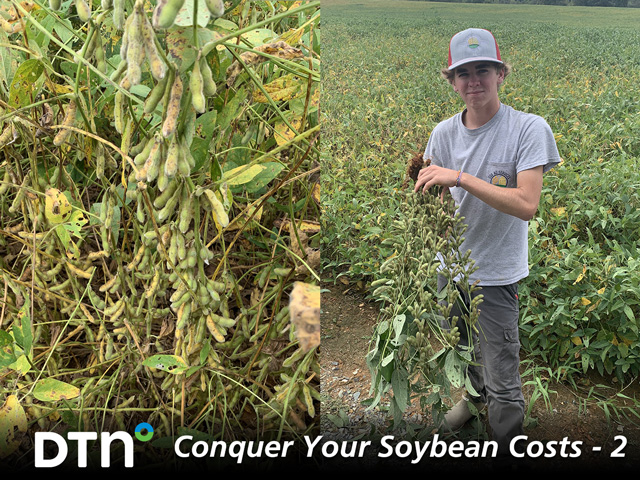Conquer Your Soybean Costs - 2
Tips to Push Soybean Yields
Will Cox can testify to the benefits of on-farm soybean plots. The Ramseur, North Carolina, farmer uses them to identify good-yielding varieties and how varieties respond to inputs.
The young farmer has already made a name for himself in soybean circles. In 2019, he was a regional winner of the North Carolina Northern Piedmont Region yield contest, with 87.5 bushels per acre.
While he's got his jaw set to break the 100-bushel mark, he insists you don't have to be gunning for yield-contest wins to benefit from on-farm plots.
"What you do need is some patience and willingness to put the hours in to get more than visual observations," Cox said.
This year, he planted a 16-variety trial with a maturity range from Group 3 to Group 5. The 4-acre plot features six rows of each variety planted in strips. He splits a 12-row planter to achieve the strips.
SOAK UP THE SUN
Cox likes to rotate the plot to a new site each year -- the farm is on a corn, soybean, wheat rotation. He works with seed companies to obtain varieties. All varieties are planted on the same day, regardless of maturity.
P[L1] D[0x0] M[300x250] OOP[F] ADUNIT[] T[]
"We watch to see which varieties are blooming by June 21 (the longest day of the year)," he said. "Every day flowering happens in front of that date gives us a yield advantage."
All varieties in the plot receive the same seed-treatment package. "Our main goal is to pick varieties for the coming year and try to understand how they respond to inputs we add. From this plot, we decide what goes into our fields the following year and what numbers we concentrate on for separate high-yield plots."
EMBRACE BRANCHING
Cox sees differences in the soybeans under scrutiny. "In variety plots, I'm mostly looking at plant structure and, specifically, which varieties offer more lateral branching. That branching is really important to us, and we prefer to see that rather than just in-line beans," he said.
The farmer is also finding big differences in how soybeans respond to different practices. "Certain varieties take up K (potassium) better. Others will stack nodes closer together when we use a PGR (plant growth regulator)," he added. Since a node is where flowers and pods are produced, the number of nodes per plant is a critical yield component.
Cox works with Bodie Kitchel, an Indiana-based agronomist with Next Level Ag, LLC, out of South Dakota, which goes beyond standard soil testing to look at soil-health measurements and soil biology. He's also national director of agronomy for BW-Fusion.
Cox's North Carolina red clay soils aren't like the deep I-state soils. Kitchel helps Cox develop testing protocols and analyze tissue samples that are pulled weekly during critical vegetative and reproductive plant stages.
"We are really working to keep the plant healthy and urging the plant to put all the nutrients we're providing toward reproduction and not just producing vegetation," Cox said.
Studying varieties also identifies opportunities for economics. "You may find a variety isn't responding or has enough of a certain micronutrient," Cox noted. "Or, maybe it performs better at a reduced population."
THREE PRO TIPS:
Want to push soybean yields? Here are three tips from agronomist Kitchel:
-- Tissue test. Listen to your plants and let them guide what nutrients they need.
-- Find someone you trust who understands tissue-test levels.
-- Understand that one product is not going to make 100-bushel dreams come true. It takes a program approach looking at a number of nutrients.
Pamela Smith can be reached at pamela.smith@dtn.com
Follow her on Twitter @PamSmithDTN
(c) Copyright 2020 DTN, LLC. All rights reserved.






